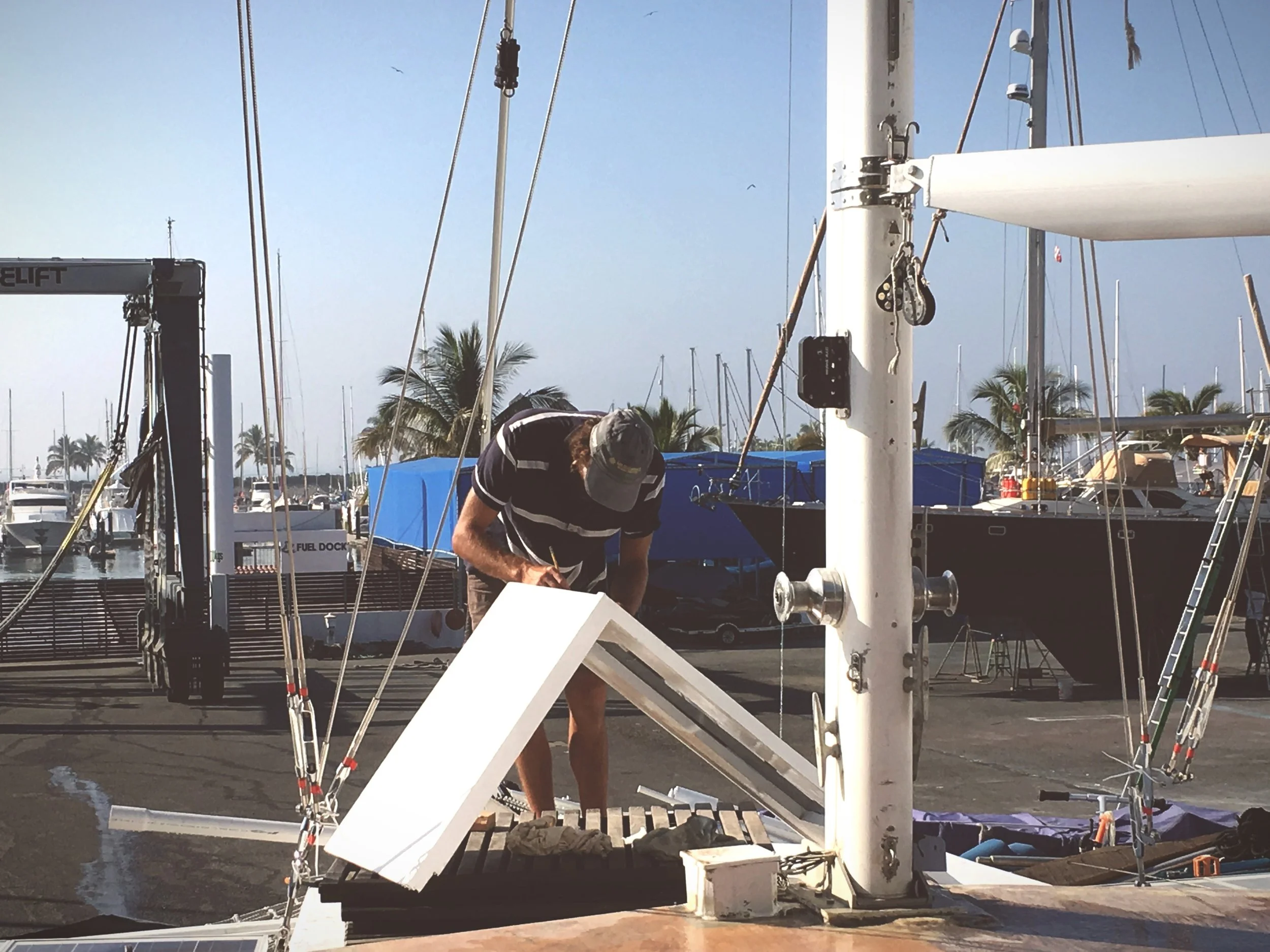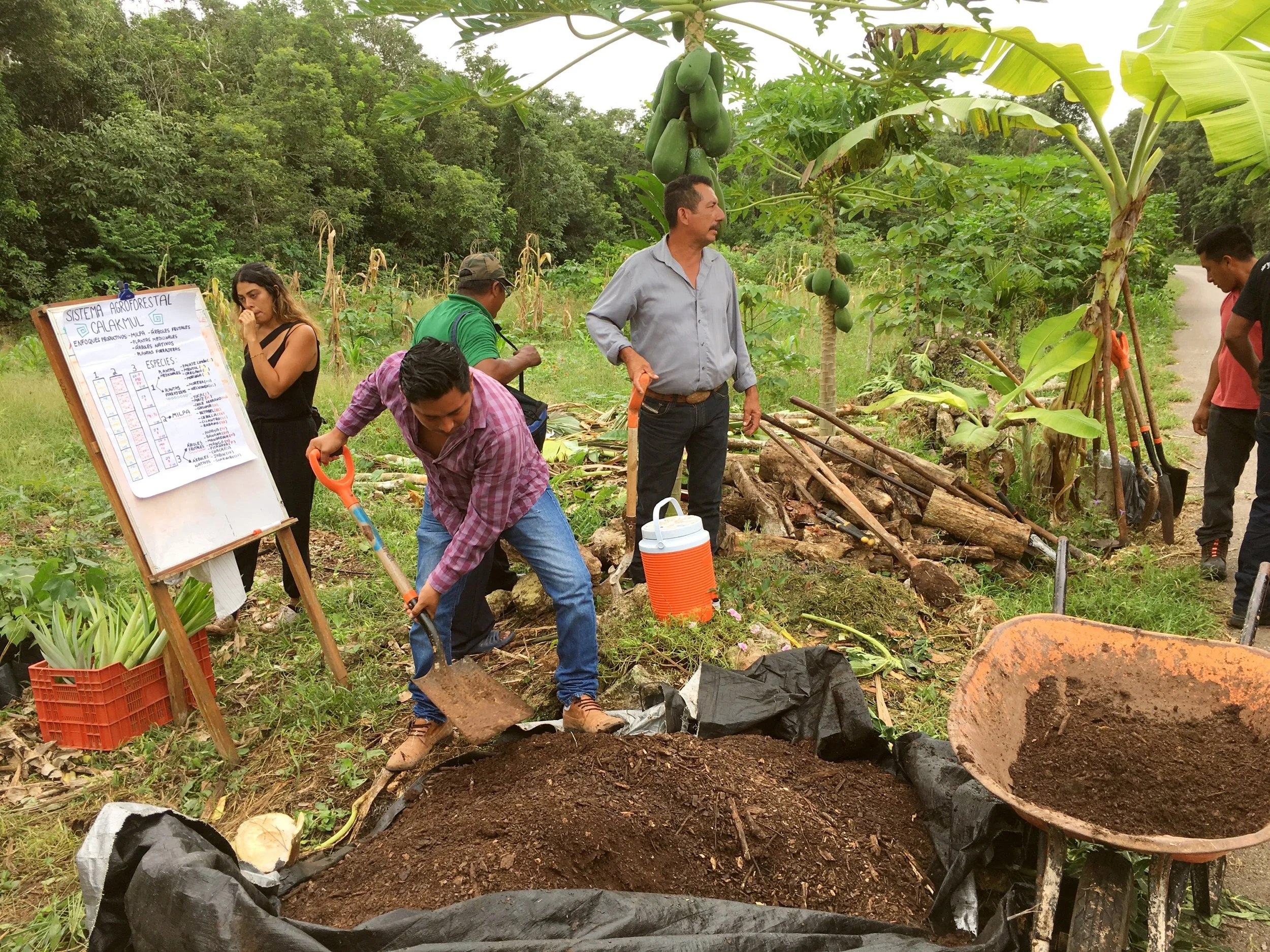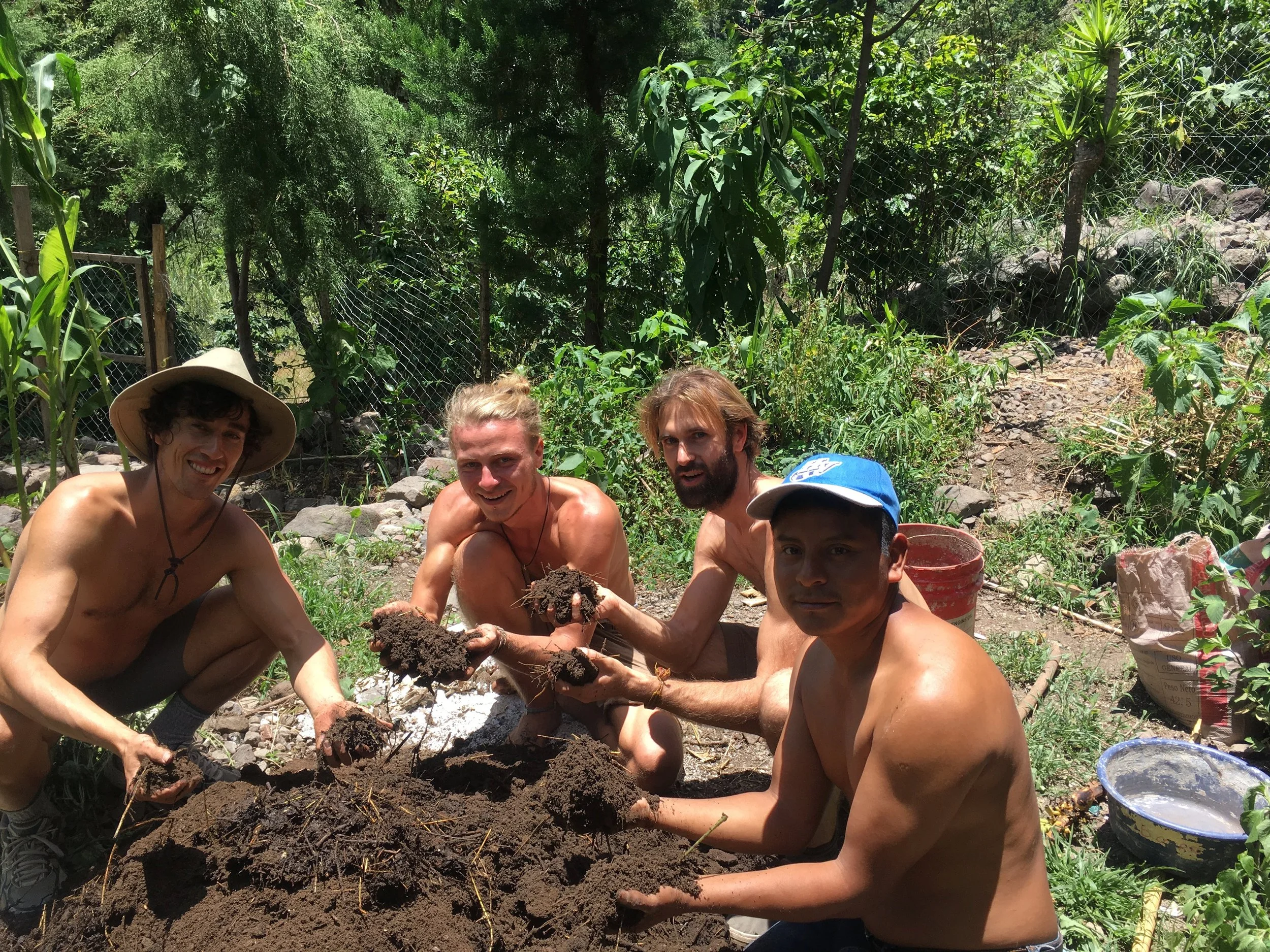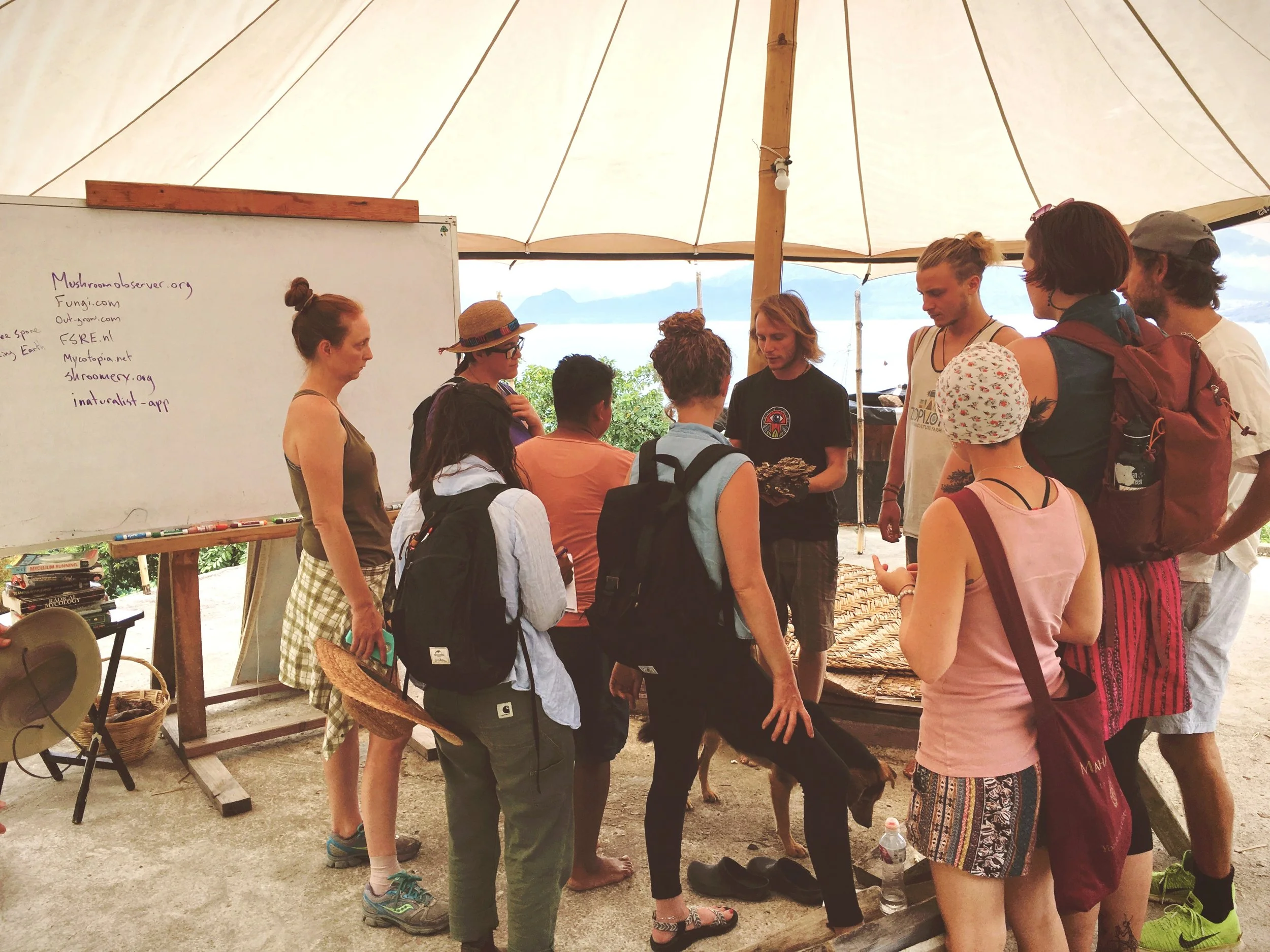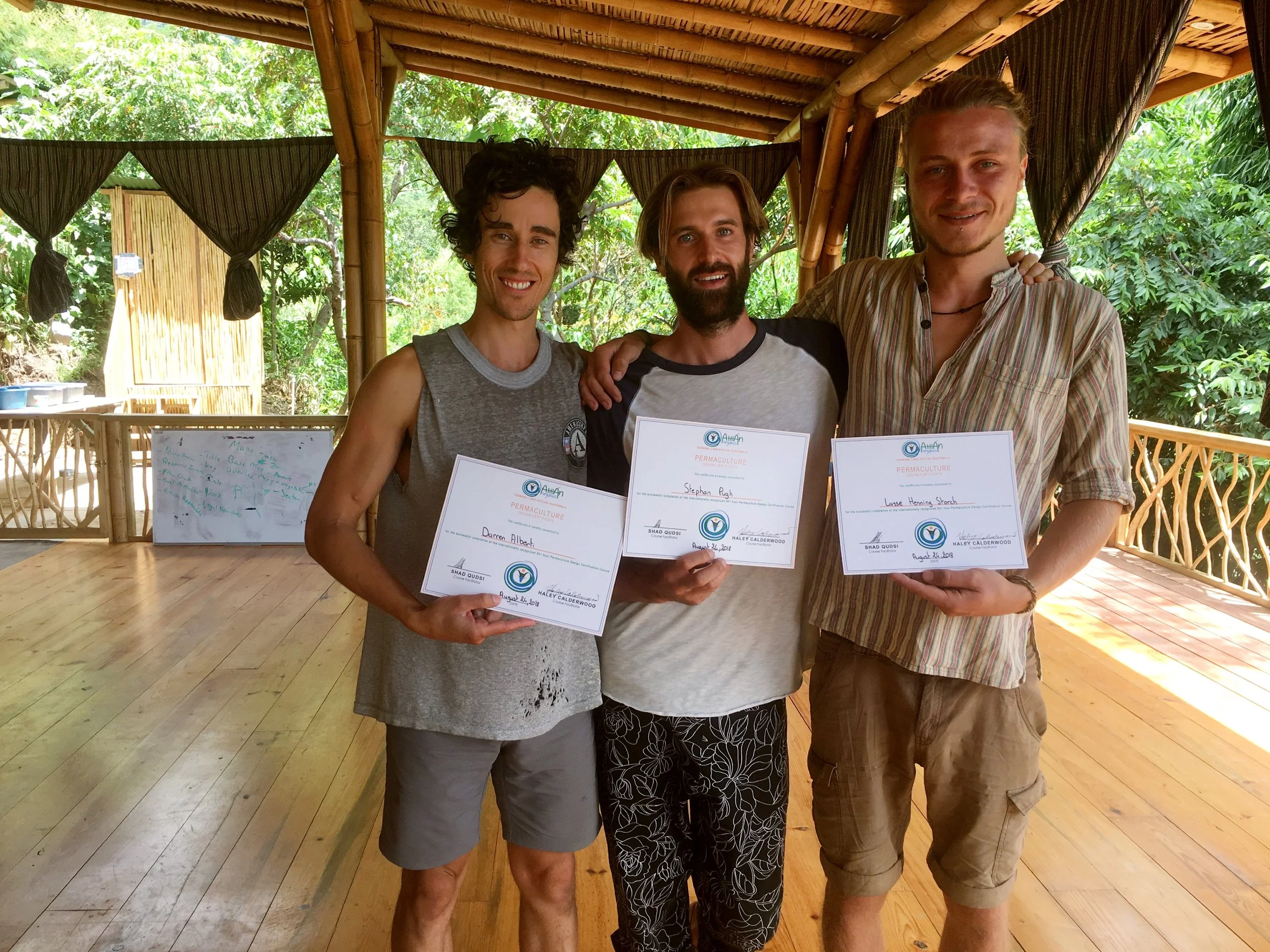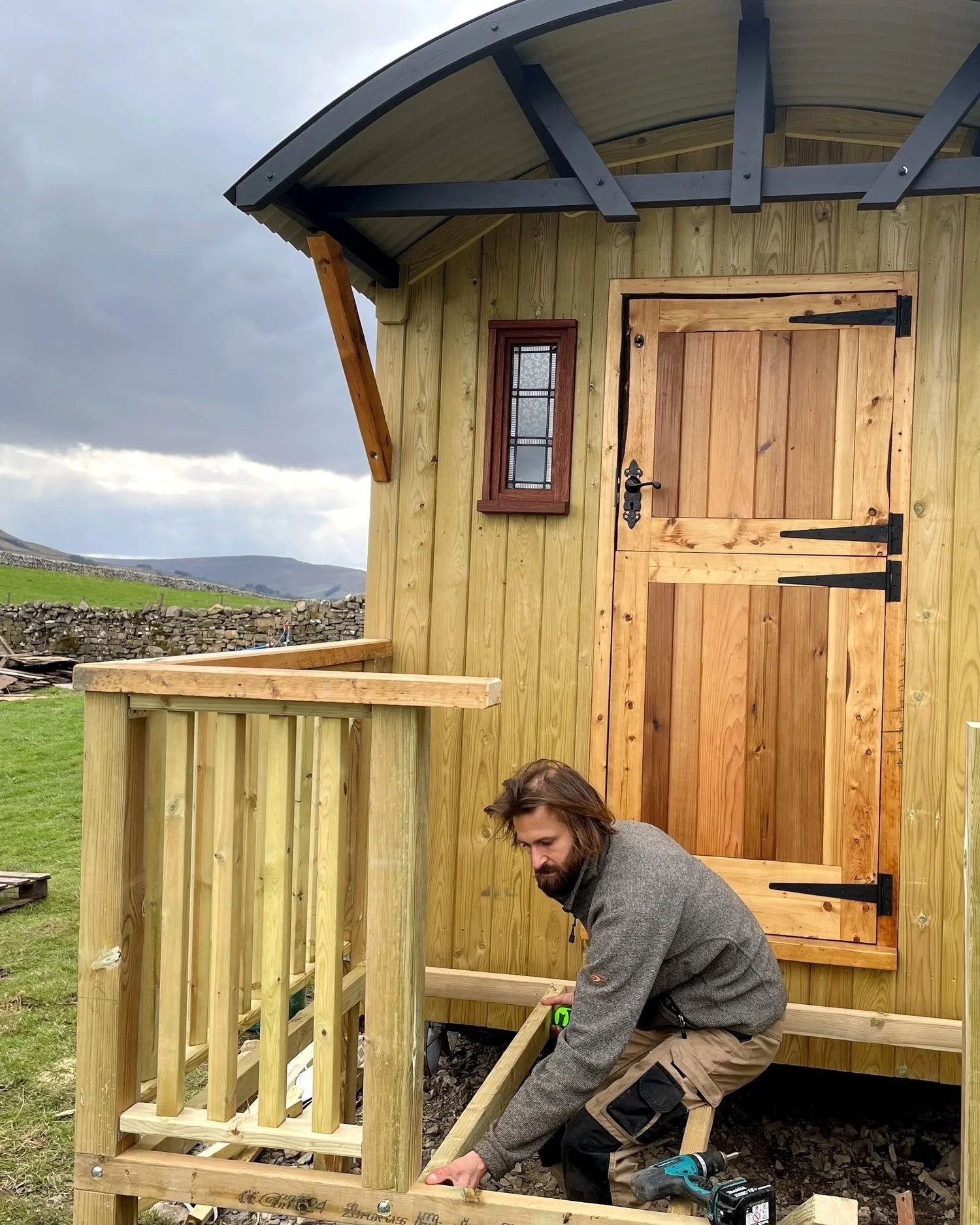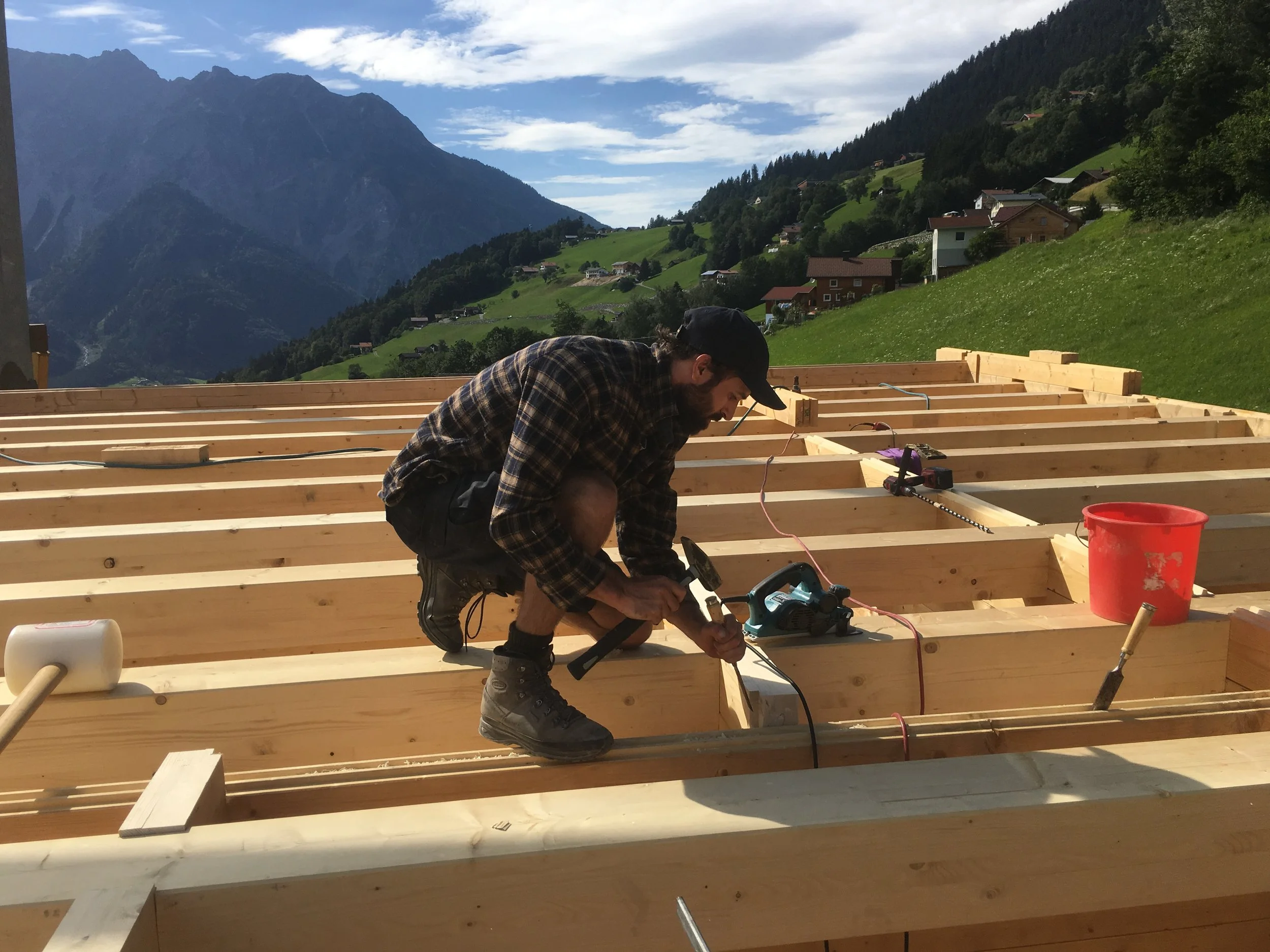
About Stephan
Over the last decade I have trained in some extraordinary places with a variety of talented craftsman, learning the wonders of woodworking and cabin building.
I was able to locate projects that had both building and sustainable goals, which alined with my outlook of sustainable living, creating a brighter, cleaner and more prosperous future, where people, plants and animals can thrive.
One such project I found on the South East corner of Mexico.
South East Mexico - I was part of a group building an eco dome on an agroforestry farm. The dome was made entirely out of thin, playable strips of bamboo woven together.
Bamboo is one of the fastest growing plants in the world due to its rhizome growth system and grows up to three times faster than other plants, making it a very sustainable material to use.
-
Bamboo is also incredibly strong, being used for scaffolding and substantial building projects in China.
It’s often still seen as a material of Southeast Asia as it grows best in certain climates, but there’s a chance it’s popularity could grow here, and not just for interior decorative use, but for construction.
Another small cabin I worked on was in North Mexico. This was a refurbishment of a trimaran for a Canadian captain and his family. A new water purification system was installed, the main table stripped and finished with epoxy, and part of the deck resealed before they set sail to French Polynesia.
Trimaran reburbishment, East Mexico
Make it stand out.
-

Agroforestry. S.E. Mexico
Agroforestry farmto further my learning of sustainable agriculture on an agroforestry project next to the stunning lake Bacalar. Along with the other volunteers I helped manage some of the land under the guidance of Jorge Espinosa, a talented young agriculturalist.
-

Recycling workshop at a school in East Mexico
Part of the work I did out in Mexico was in collaboration with a small team educating students about the importance of recycling. The region suffered from poor waste disposal and being coastal, much of the rubbish was either burnt or ended up in the sea.
-
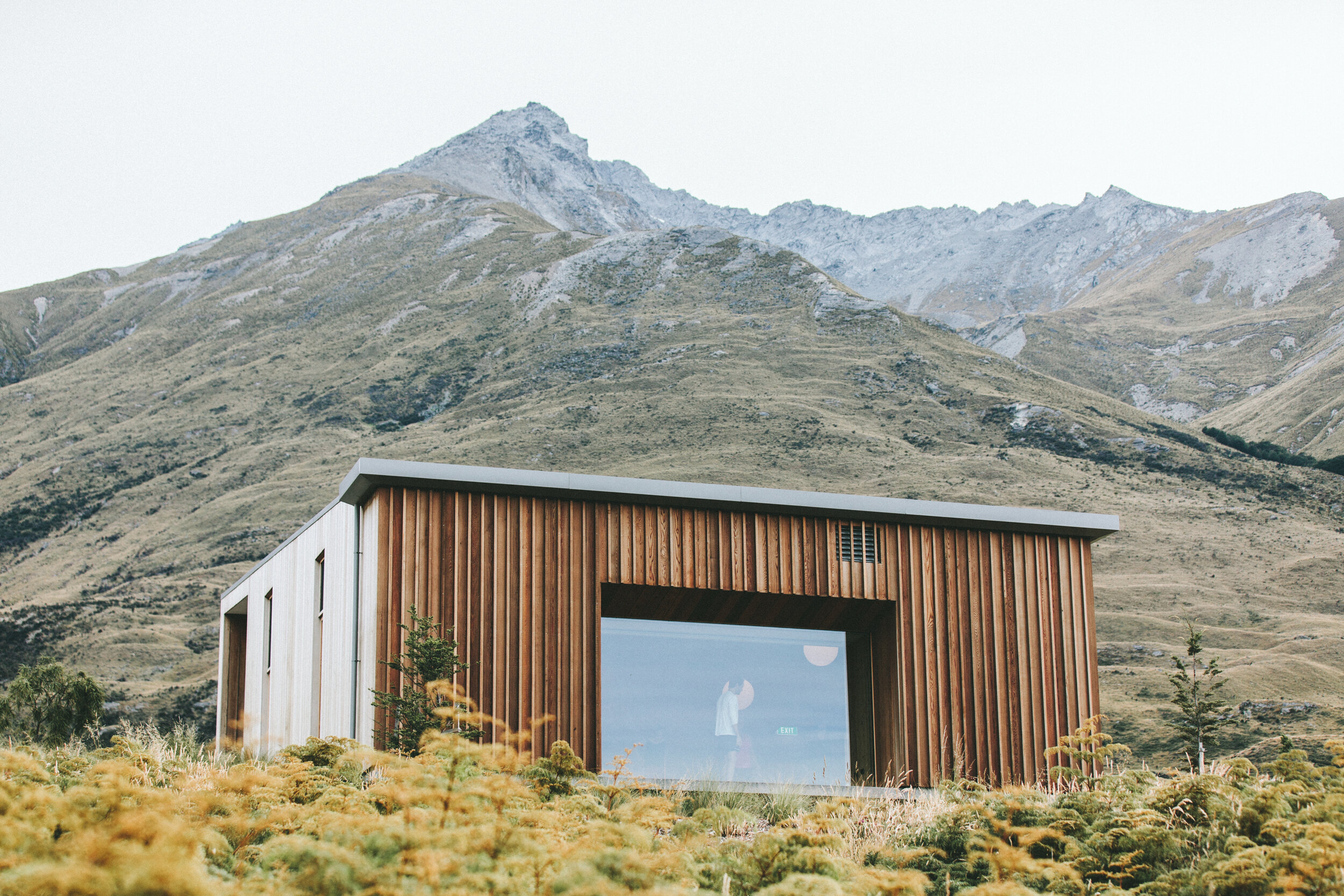
Grow it.
It all begins with an idea. Maybe you want to launch a business. Maybe you want to turn a hobby into something more. Or maybe you have a creative project to share with the world. Whatever it is, the way you tell your story online can make all the difference.
On the agroforestry farm, In the same place to further my learning of sustainable agriculture on an agroforestry project next to the stunning lake Bacalar. Along with the other volunteers I helped manage some of the land under the guidance of Jorge Espinosa, a talented young agriculturalist.
Guatemala
I learned about sustainability in agriculture in Central America, which was one of my goals as it would enable a more rounded approach to living and building more sustainably.
At Lago Atitlan, a volcanic lake in South West Guatemala, a well respected leader and facilitator of permaculture, Shad Qudsi, guided us through the ins and outs of permaculture ideology. Including plant types, plant combinations in growing and the characteristics of good compost.
The joys of compost
Mushroom academy, Guatemala.
During the 14 day course, a trip to the Mushroom Academy, and part of the course focused on designing a plot of land using permaculture ideas, which included a designing a composting toilet, redirecting natural water systems and cultivating crops suitable for the land and climate.
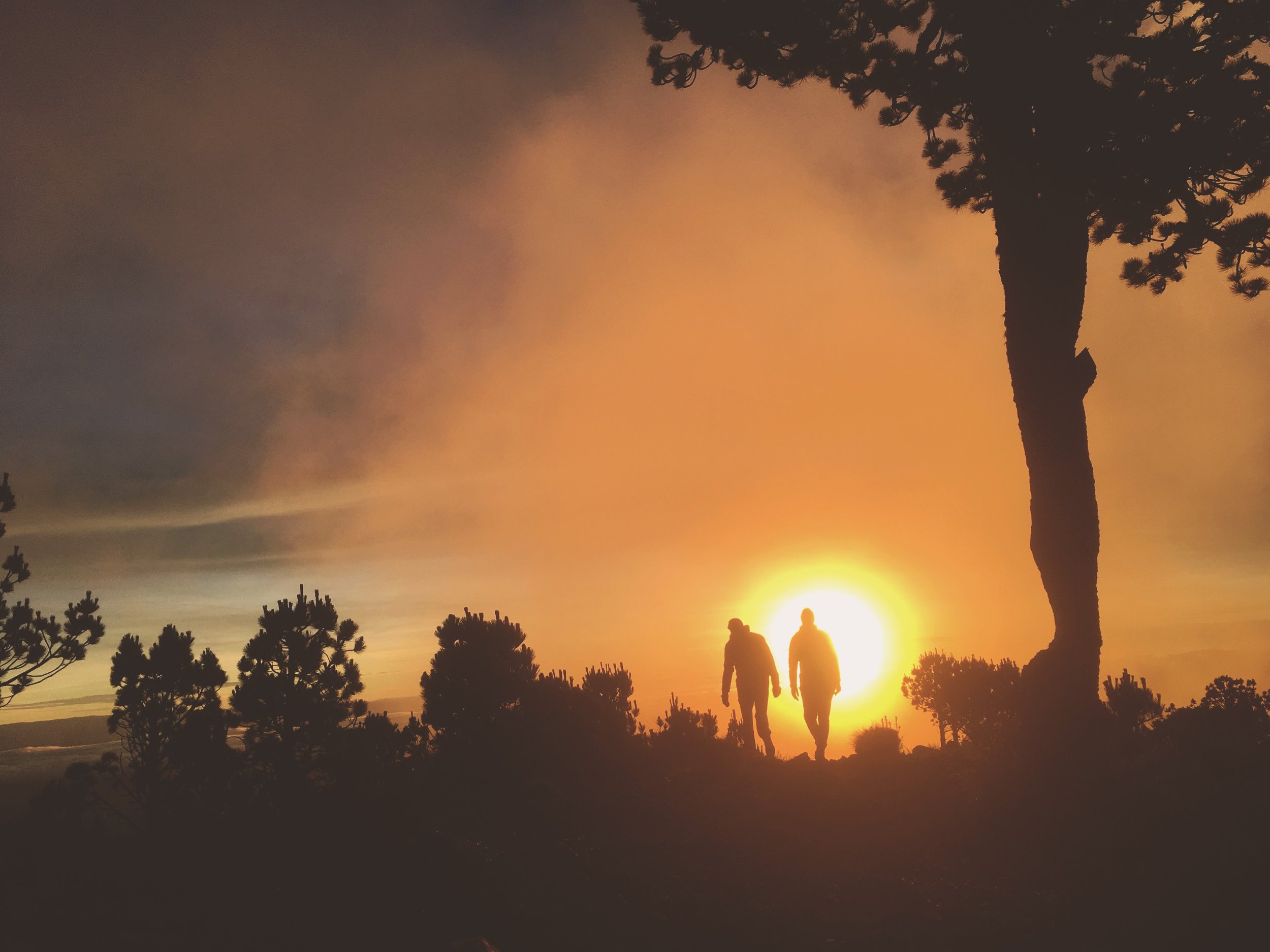
Hiking in Guatemala
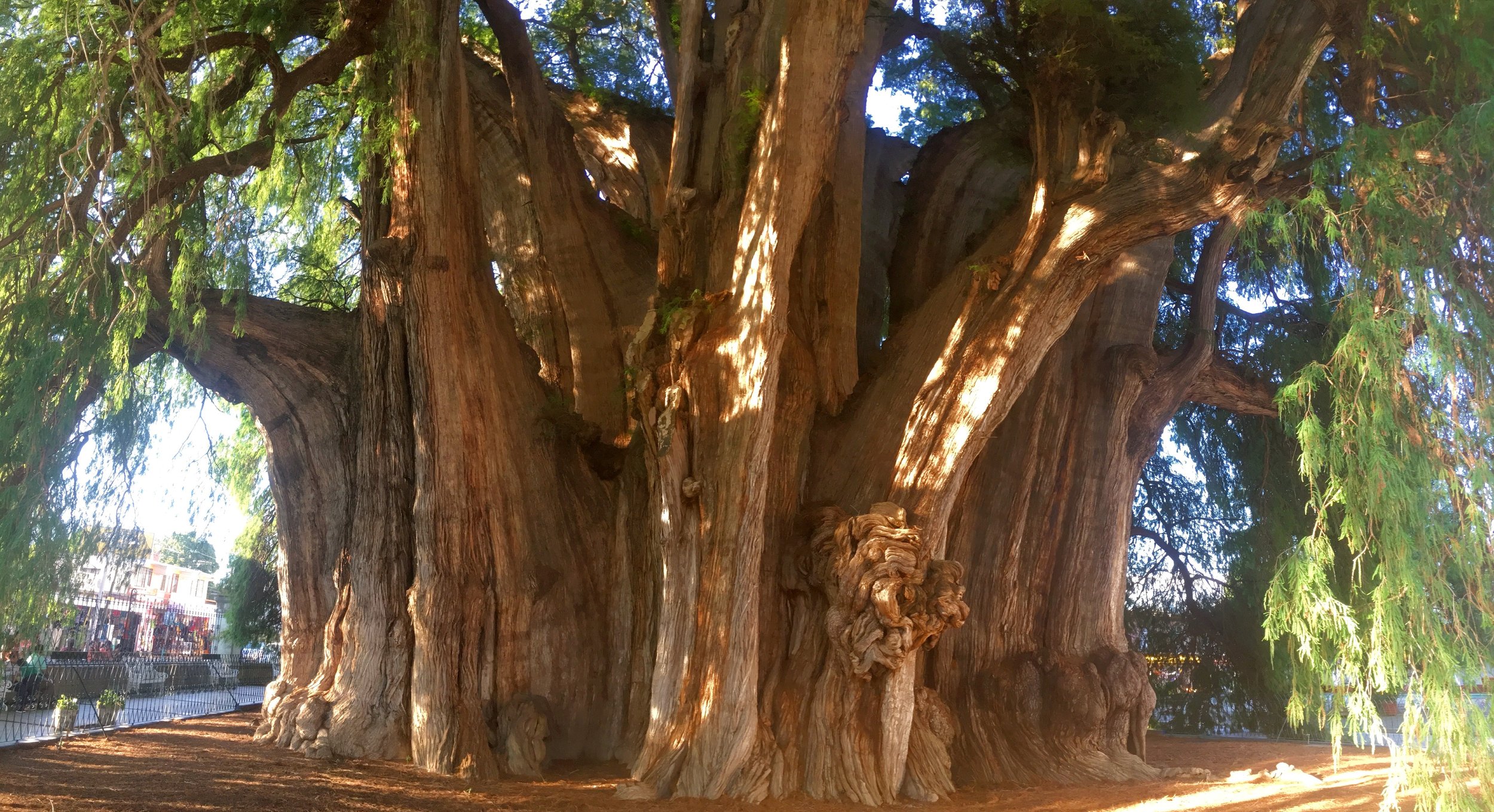
Arbol Del Tule - Oaxaca, Mexico
Founder - Stephan Pugh
I trained as a carpenter on the job over the last decade, learning from talented craftsman in England and abroad.
from Over the last I founded Birch Leaf Design after working as a carpenter-joiner both in the UK and abroad for almost a decade, building up my knowledge and skills whilst working with and learning from talented craftsmen.
One project that stands out was in 2018 on the west coast of Mexico. I worked closely with the captain of a trimaran, refurbishing the inside of his boat with new furniture such as an epoxy topped table, installing a water purification system and climbing the mast to check elements where all in order.
A couple of years before this, I worked for well respected foreman of a building company in Australia, assisting him whilst redesigning the interior of his own house. We worked together on the project, just the two of us so I was able to learn a great deal from him, we’re still in touch now even after so many years.
Three years ago, I was part of a blockhouse building company in Austria, working high up in the Austrian Alps before then returning to England to focus on building shepherds huts.
Building the seating/viewing deck for this commissioned hut

Working on a Trimaran on the west coast of Mexico
The shepherd’s huts that I make can be used in a variety of way, such as: to extend your living space at a more affordable price than building an extension; make some money letting your hut as a glamping pod or holiday rental; nurture your creativity in a purpose built office, or a music or art studio; or cosy up in a lovely space next to a woodburning stove with a hot chocolate or glass of whisky. Shepherd’s huts also work very well as a tiny house for people striving for a simpler life.
There are many factors that make shepherd’s huts desirable. I very much like the curved ceiling for example, which feels fresh and different as most ceilings in today’s houses are flat. You can really get away from things too in a shepherd’s hut, more so than in the next room of a house. Shepherd’s huts can be incredibly versatile and cosy with king size beds or lounge corners next to log burners.
The huts here are completely hand made by myself, bar a couple of things that I’ll come on to shortly. The window frames are made from a good quality hardwood and I also make the stable door too, often from reclaimed pine and cedar panelling. The pine has a lovely rich depth of colour and is over 150 years old. I’ve also made some built-in bunkbeds with handmade steps to reach the top bunk, and bespoke furniture can also feature in my huts.
There are some sections that I don’t make myself, such as the steel chassis, and in this case I work closely with my welder to produce a frame thats strong and versatile. The stained-glass windows are also made in collaboration with a talented stained-glass artist. Regular conversations and drawings are exchanged between us before the design is finalised and he works his magic. I then take great pleasure in hand making the frames, for which sapele is used, a hardwood I like using and which is described in the materials section.
There are hints of design elements that I have picked up from working along side the craftsmen I mentioned earlier, and also from the places I have worked, such as the front of a huge barn in Austria inspiring the portico design of my hut, which is now a recognisable feature of my huts. It also gives extra strength to the roof above the door, not to mention some protection from the rain.
If you would like to know more, or speak to me about the possibility of requesting a shepherds hut order, get in touch.
I look forward to hearing from you
Stephan



